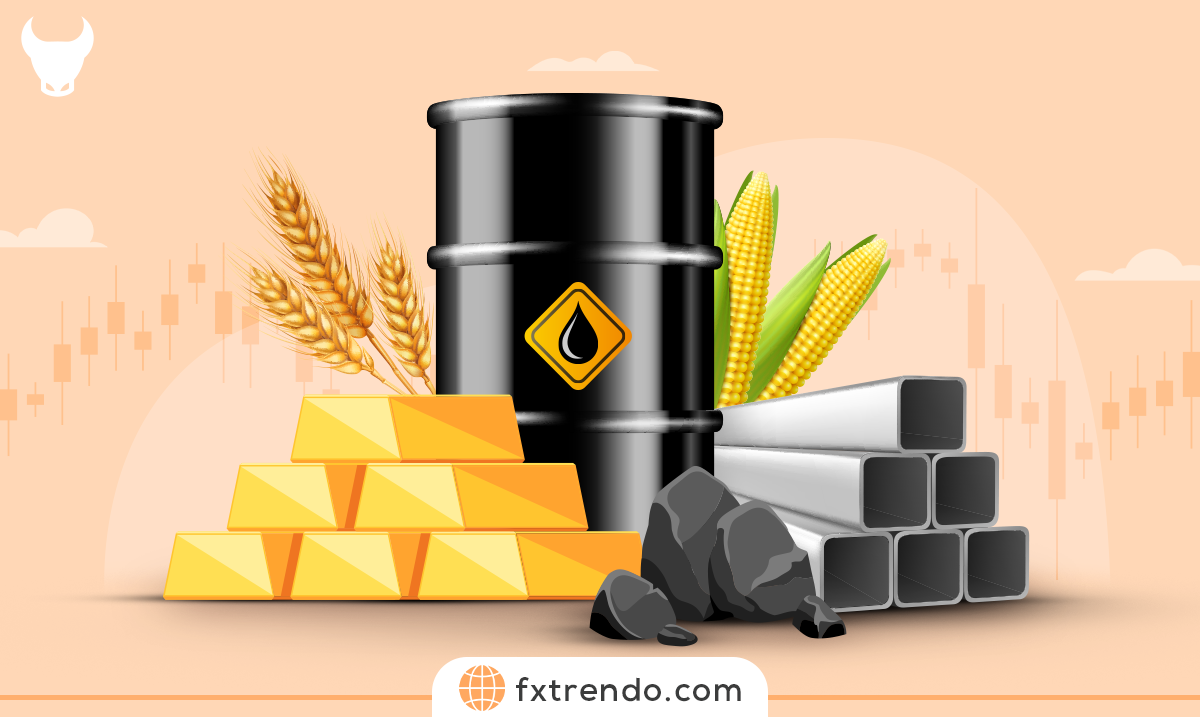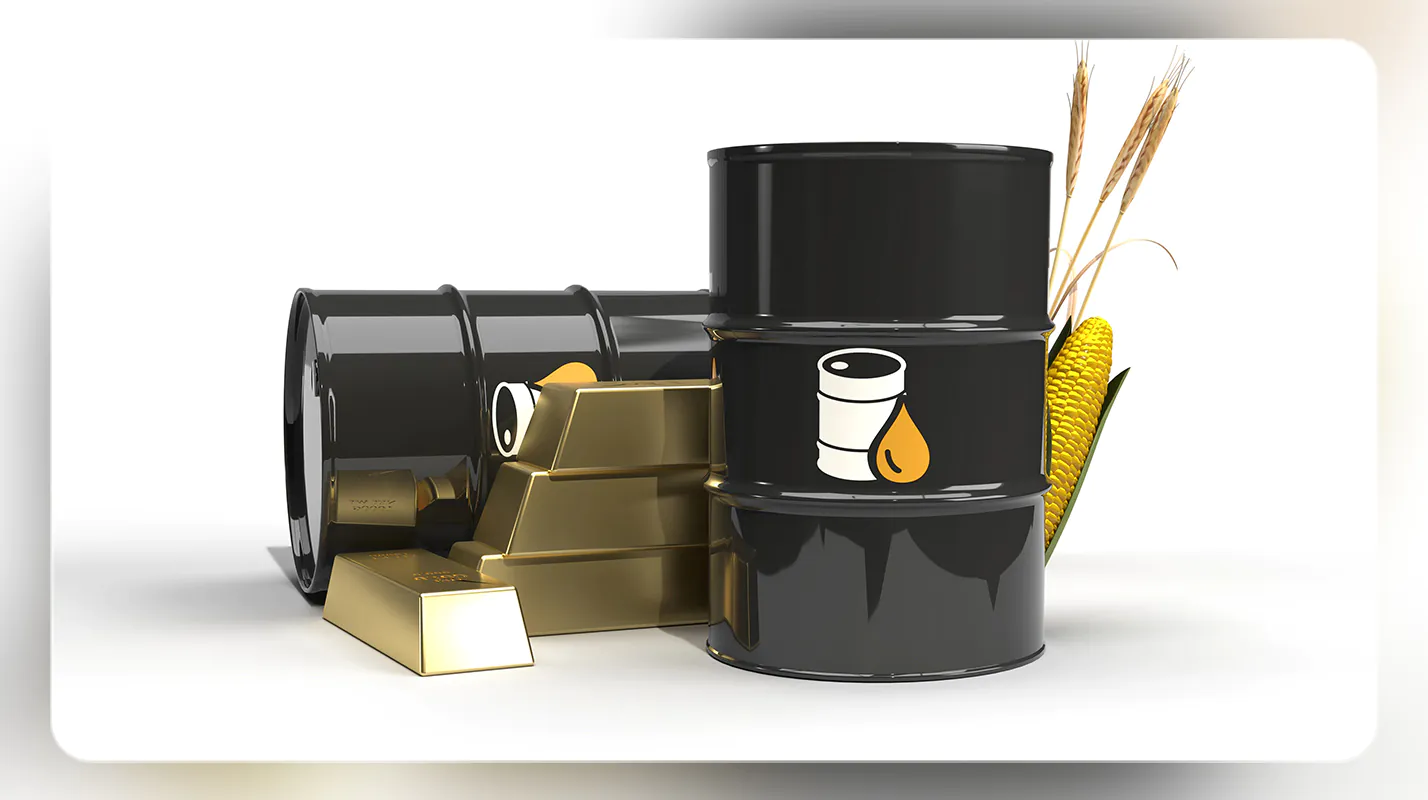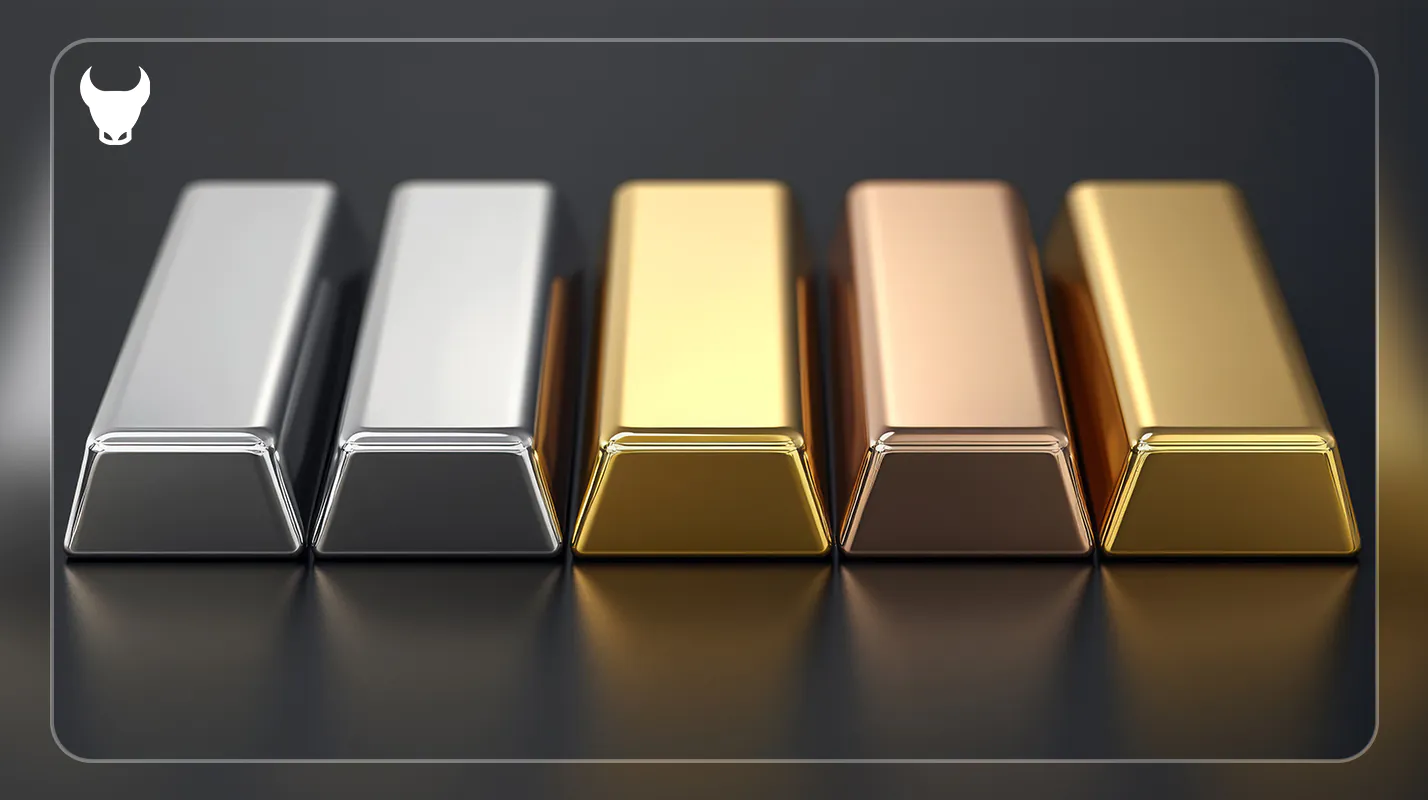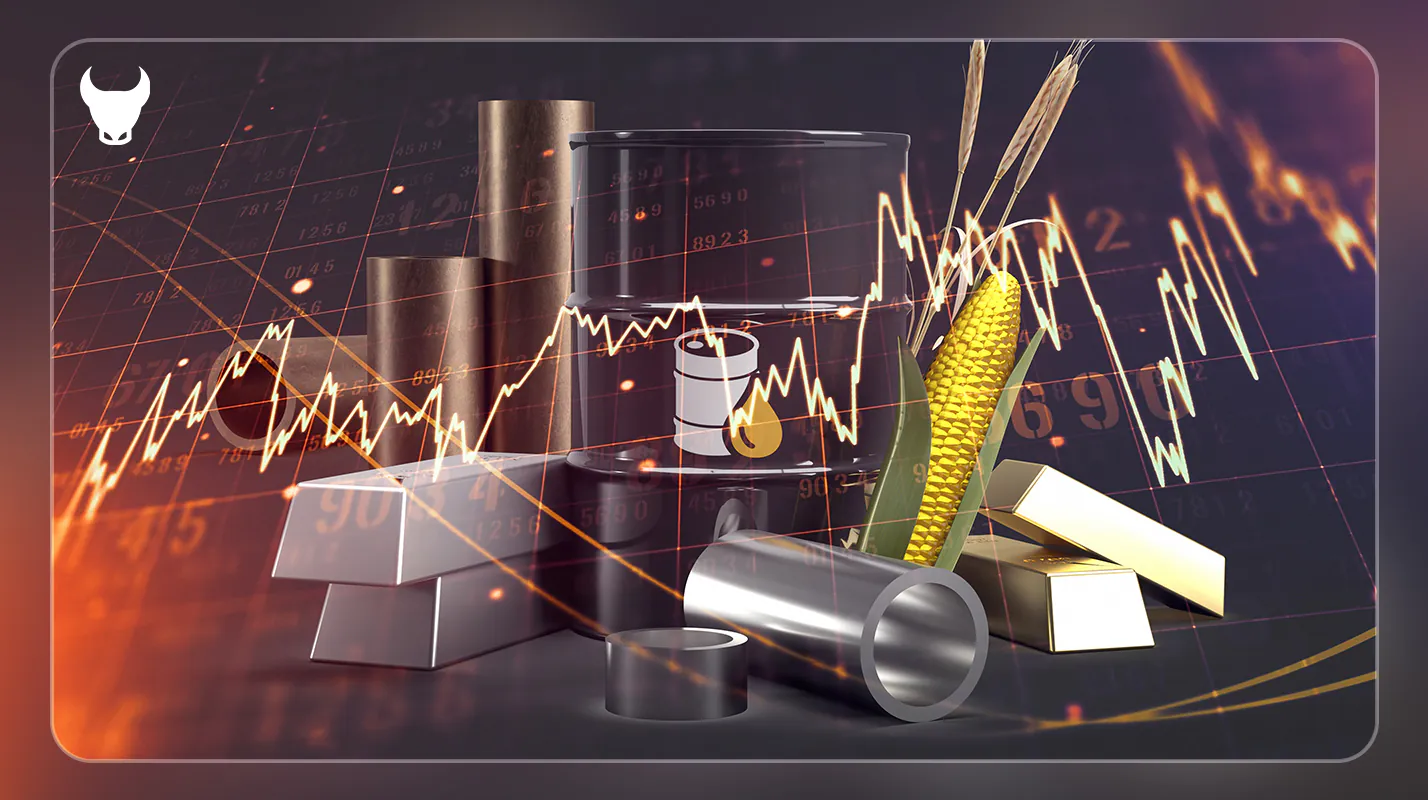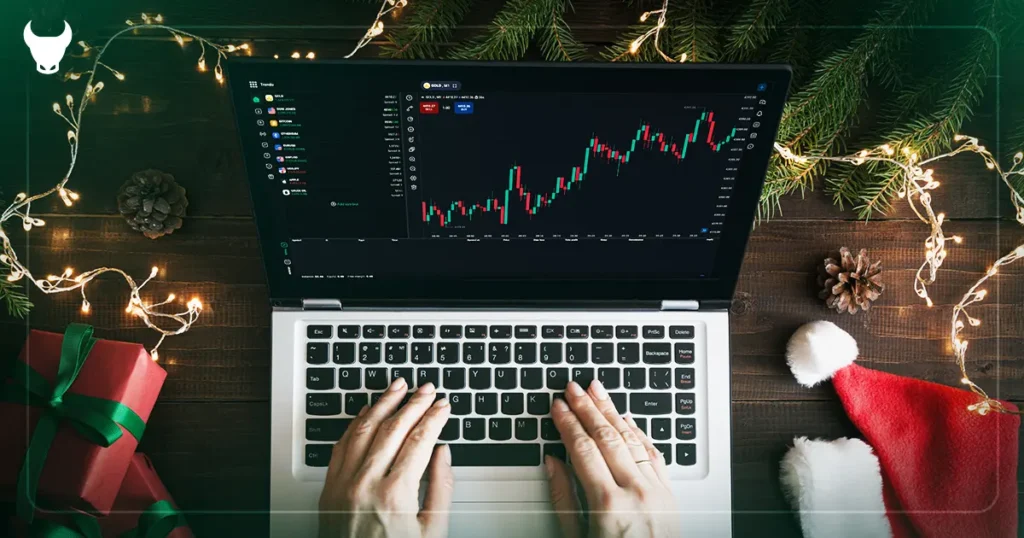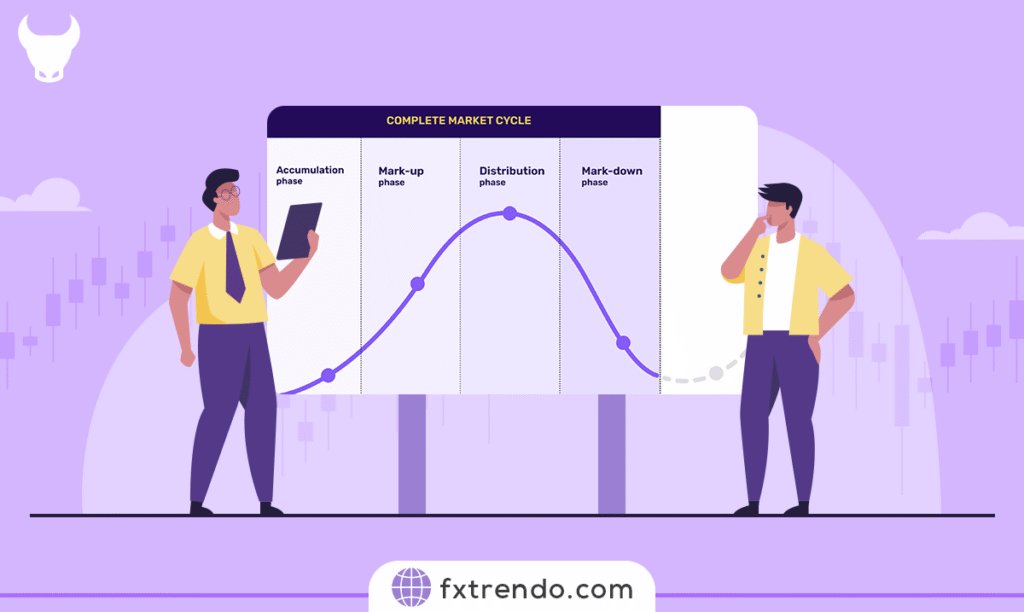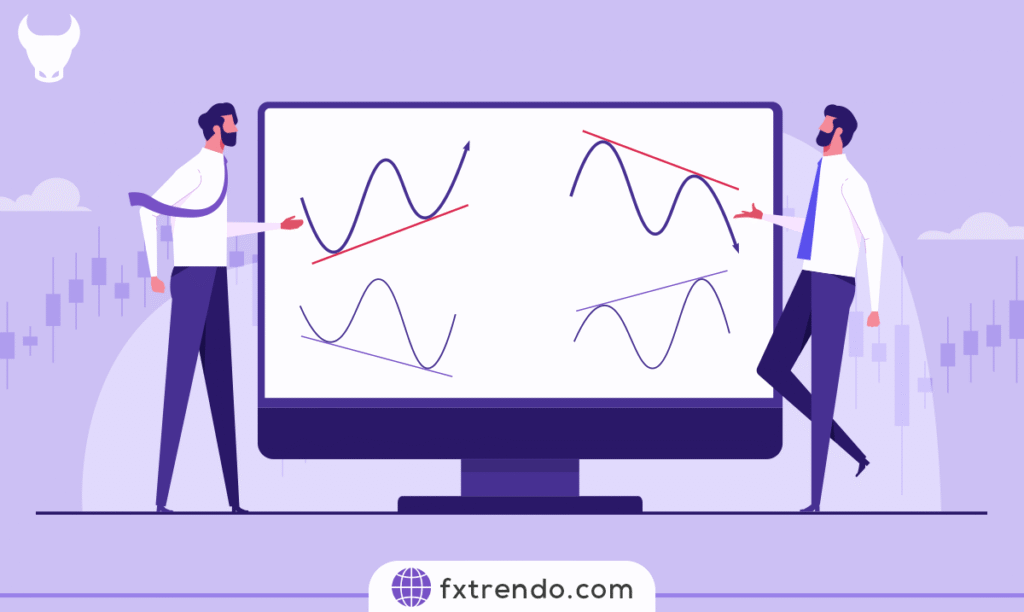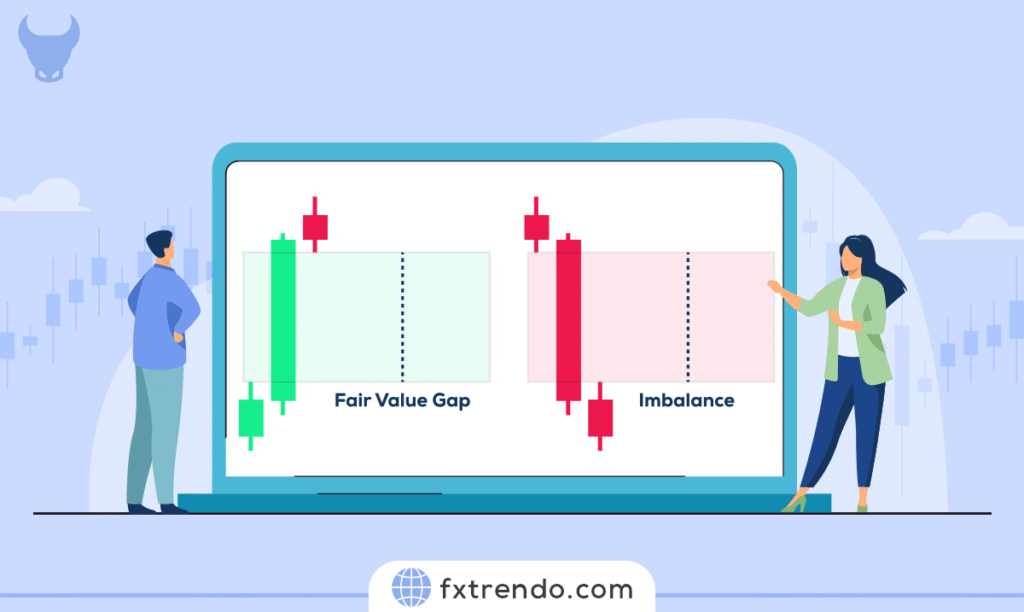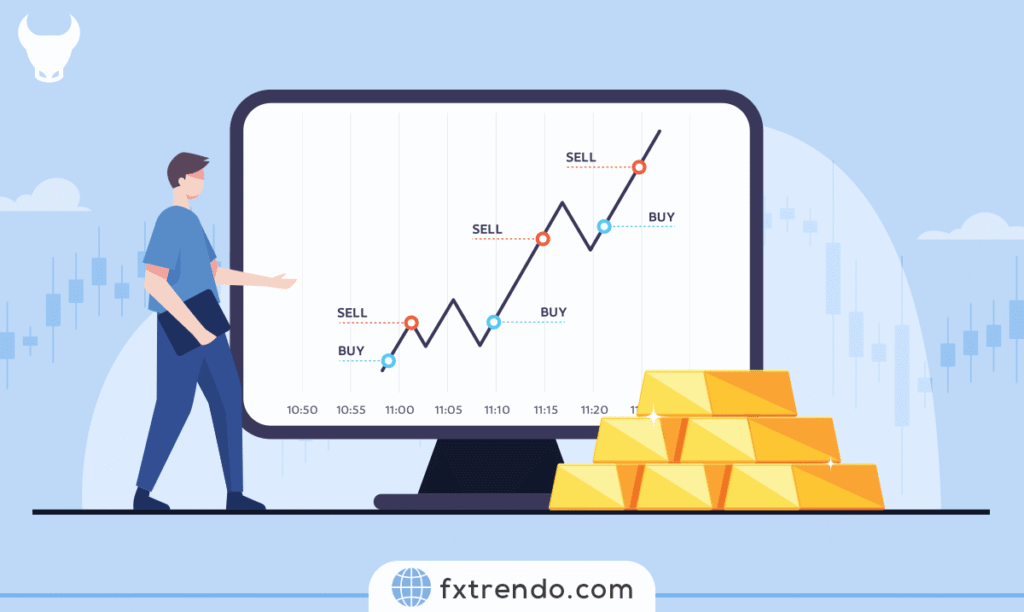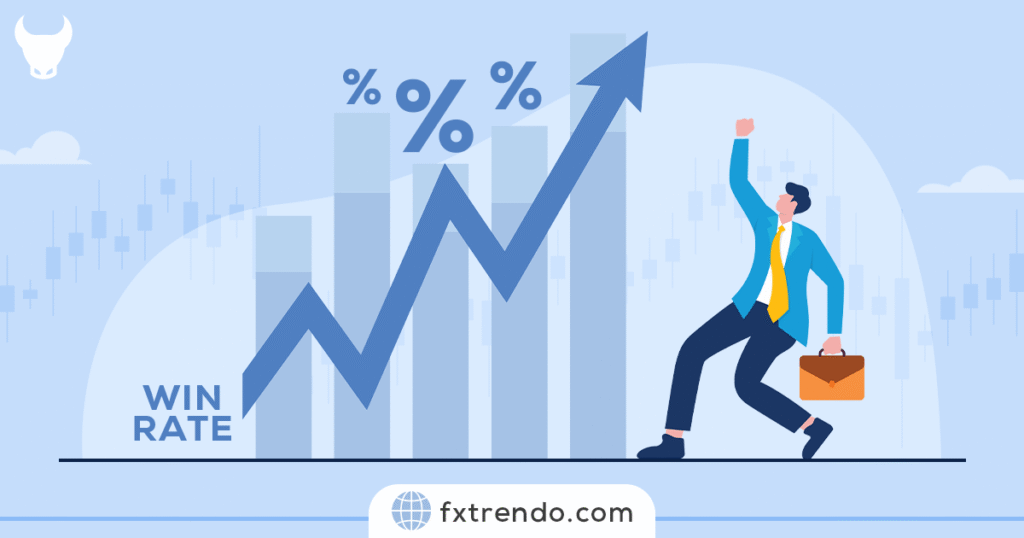کامودیتی چیست؟
کامودیتی یا کالا، مواد اولیه ای هستند که در سطح جهانی معامله می شوند و شامل محصولات کشاورزی، فلزات و محصولات انرژی هستند. کالاها بنیان اقتصاد جهانی را تشکیل می دهند و برای تولید و مصرف ضروری هستند. در معاملات فارکس، این محصولات به صورت CFD معامله می شوند و به دلیل نقدینگی و نوسان بالا در بین تریدرها محبوب هستند. بیشترین کالاهایی که در بازار فارکس معامله می شوند، نفت خام، طلا، نقره و محصولات کشاورزی مانند گندم، ذرت و سویا هستند و قیمت آنها تحت تأثیر عوامل مختلفی مانند عرضه و تقاضا، رویدادهای ژئوپلیتیکی، داده های اقتصادی، الگوهای آب و هوا و سیاست های دولت تغییر می کند.
حتما بخوانید:
جفت ارز چیست؟ (در فارکس چه چیزهایی معامله می شود؟)
انواع کامودیتی
کالاها یا کامودیتی به طور کلی به دو طبقه تقسیم می شوند:
- کامودیتی سخت
- کامودیتی نرم
کامودیتی سخت:
معمولاً به عنوان کالاهایی که از زمین استخراج می شوند طبقه بندی می شوند. این کالاها می تواند شامل فلزات، سنگ معدن و محصولات نفتی (انرژی) باشد.
کامودیتی نرم:
به کالاهایی که کاشته می شوند و رشد میکنند، مانند محصولات کشاورزی اشاره میکنند. این طبقه شامل گندم، پنبه، قهوه، شکر، سویا و سایر اقلام قابل برداشت است.
همچنین در طبقه بندی دیگری، بازار کامودیتی به سه دسته مختلف تقسیم می شود:
- کالاهای کشاورزی
- کالاهای انرژی
- کالاهای فلزی
در ادامه این طبقات به تفصیل توضیح داده می شود.
کالاهای کشاورزی:
کالاهایی که در این دسته قرار می گیرند عبارتند از شکر، قهوه، کاکائو، پنبه، ذرت و گندم. بسیاری بر این باورند که بازارهای کشاورزی به طور گسترده مورد معامله قرار نمی گیرند، اما این واقعیت ندارد و در واقع قهوه بعد از نفت دومین کالای بزرگ دنیاست. عواملی که بر قیمت کالاهای کشاورزی تأثیر میگذارند، عرضه/تقاضا، آب و هوا، توافقهای تجاری با سایر کشورها، فناوری جدید، مالیات و غیره است.
کالاهای انرژی:
این طبقه از کامودیتی بسیار محبوب است و شامل نفت خام برنت، نفت خام WTI، بنزین و غیره است. دلیل اهمیت این کالاها این است که آنها بخشی جدایی ناپذیر از صنایع مختلف هستند. آنها قدرت حرکت کل اقتصاد را دارند. به عنوان مثال، افزایش قیمت نفت بر شرکتهای هواپیمایی، صنایع رنگ، شرکتهای لاستیک و بسیاری دیگر تأثیر میگذارد.
کشورهایی مانند روسیه و عربستان سعودی به شدت به نفت وابسته هستند. عواملی مانند عرضه و تقاضا نقش عمده ای در تعیین قیمت نفت دارند. برخی از عوامل دیگر (که مختص نفت است) شامل نتیجه نشست اوپک (سازمان کشورهای صادرکننده نفت)، بیانیههای سیاسی، توافقهای بینالمللی و غیره است.
کالاهای فلزی:
این دسته شامل فلزات گرانبها مانند طلا، نقره، پلاتین و پالادیوم است. در گذشته های دور معاملات فلزات گرانبها تنها توسط سرمایه گذاران ثروتمند امکان پذیر بود، اما اکنون با معرفی معاملات CFD، معامله گران می توانند به راحتی و حتی با اهرم در فلزات مختلف سرمایه گذاری کنند.
تریدرها به خصوص برای خرید و فروش کامودیتی پرطرفداری به نام طلا به دنبال یک کارگزاری فارکس معتبر هستند. در این خصوص اگر شما هم به دنبال یک برورکر فارکس معتبر برای معامله طلا با اسپرد پائین، کمیسیون مناسب و البته پشتیبانی 24 ساعته هستید، بروکر ترندو می تواند یکی از گزینه های مطلوب برای شما به حساب آید .
عرضه و تقاضا بر قیمت طلا و سایر فلزات نیز تاثیر می گذارد. عوامل دیگر مانند تغییرات اقتصادی در چین و هند (زیرا آنها بزرگترین مصرف کنندگان جهان هستند)، مالیات، و تغییرات نرخ بهره فدرال نیز بر قیمت این کالاها موثر است.
طلا به عنوان محبوب ترین دارایی این طبقه از نظر تاریخی همبستگی پایینی با سایر طبقات دارایی، مانند سهام و اوراق قرضه نشان داده است و اغلب مستقل از سایر دارایی ها حرکت می کند و آن را به یک دارایی ارزشمند برای تنوع بخشیدن به پرتفوی سرمایه گذاری تبدیل می کند. معاملات طلا در بروکرهای فارکس به تریدرها این امکان را می دهد که از پتانسیل طلا به عنوان یک سرمایه گذاری استفاده کنند، بدون اینکه مالکیت فیزیکی آن فلز را داشته باشند.
حتما بخوانید:
ویژگی بهترین بروکر برای ترید یا معامله طلا
شاخص کالا چیست؟
شاخص کالا، شاخصی است که به قیمت و بازده سبدی از کامودیتی وابسته است. این شاخصها اغلب برای سرمایهگذاری از طریق صندوقهای قابل معامله در بورس (ETF) قابل دسترس هستند. ارزش این شاخص ها بر اساس کالاهای اساسی آنها در نوسان است. هر شاخص کالایی در بازار از نظر اینکه از چه کالاهایی تشکیل شده است، ترکیب متفاوتی دارد. برای مثال، شاخص CRB( Commodity Research Bureau) از 19 نوع کالای مختلف شامل کاکائو، دانههای سویا، طلا، نفت خام و گندم تشکیل شده است.
شاخصهای کالایی از نظر وزنی نیز متفاوت هستند. شاخص آتی کالا داو جونز که در سال 1933 ایجاد شد، اولین شاخصی بود که قیمت کالاها را دنبال کرد. گلدمن ساکس شاخص کالایی خود را در سال 1991 به نام شاخص کالای گلدمن ساکس (GSCI) راه اندازی کرد. شاخص گلدمن ساکس زمانی که در سال 2007 توسط استاندارد اند پورز خریداری شد، به S&P GSCI تغییر نام داد. خانواده شاخص کالای بلومبرگ (BCOM) و شاخص بین المللی کالایی راجرز (RICI) دو شاخص کالای محبوب دیگر هستند.
تاثیر نوسانات قیمت کامودیتی بر بازار فارکس
زمانی که کشوری کالایی را به بازار بین المللی صادر می کند، هزینه معامله به ارز آن کشور پرداخت می شود. بنابراین، زمانی که قیمت کالاها افزایش می یابد، به این معنی است که ارز داخلی کشور صادرکننده تقاضای بالایی خواهد داشت. واردکنندگان این کالا باید تعداد بیشتری از ارزهای خود را به ارز کشور صادرکننده تبدیل کنند. در نتیجه ارزش پول داخلی آن کشور نسبت به سایر ارزها افزایش خواهد یافت. از سوی دیگر، کاهش قیمت کالا به این معنی است که برای خرید صادرات به مقدار کمتری ارز داخلی آن کشور نیاز است. در نتیجه، ارزش پول داخلی کشور صادرکننده نسبت به سایرین اندکی کاهش خواهد یافت.
حتما بخوانید:
بهترین زمان معامله جفت ارزهای بازار فارکس
کامودیتی در بروکرهای فارکس
علیرغم این واقعیت که فارکس در درجه اول بازاری برای معامله انواع ارز است، اکثر بروکرهای فارکس از جمله کارگزاری ترندو طیف گسترده ای از دارایی های مختلف دیگر را به مشتریان خود ارائه می دهند. با انجام این کار، این کارگزاران به مشتریان خود در تنوع بخشیدن به سرمایه گذاری های خود کمک می کنند. بروکر ترندو اجازه ترید فلزات گرانبها مانند طلا، نقره و غیره را می دهد و همچنین تریدرها می توانند کالاهای انرژی مثل نفت خام را نیز در این کارگزاری معامله کنند.
نکاتی در مورد ترید کامودیتی
معامله گران باید هنگام سرمایه گذاری و ترید کالاها نکات زیر را مد نظر قرار دهند:
- بررسی میزان تولید یا استخراج کامودیتی
- استفاده از تحلیل تکنیکال و فاندامنتال
در ادامه هر کدام از نکات را تشریح خواهیم کرد.
بررسی میزان تولید یا استخراج کامودیتی:
تریدرها می توانند میزان تولید و استخراج محصولات را بررسی کنند زیرا این عامل می تواند به آنها سرنخ هایی در مورد جهت گیری بازار بدهد. همچنین میزان موجودی کالاها نیز می تواند ابزاری عالی برای تحلیل بازارهای کامودیتی باشد. کاهش مداوم سطح موجودی می تواند منجر به قیمت های بالاتر شود، در حالی که افزایش موجودی می تواند منجر به کاهش قیمت شود.
استفاده از تحلیل تکنیکال و فاندامنتال:
تحلیل تکنیکال یکی دیگر از روش های پرکاربرد برای معامله کالاها است. این نوع تحلیل از قیمت و روندهای گذشته برای پیش بینی آینده استفاده می کند. معامله گران تکنیکال هیچ توجهی به عوامل فاندامنتال ندارند، بلکه فقط قیمت را زیر نظر دارند. اما، توصیه ما این است که هم عوامل فاندامنتال و هم تحلیل تکنیکال را در نظر بگیرید تا در هنگام معامله کامودیتی بهترین نتایج معاملاتی را به دست آورید.
سخن آخر
معامله کامودیتی در بازار فارکس یک راه عالی برای متنوع کردن سبد معاملاتی شما است. قیمت این کالاها تحت تأثیر عوامل مختلفی مانند عرضه و تقاضا، رویدادهای ژئوپلیتیکی، داده های اقتصادی، الگوهای آب و هوا و سیاست های دولت قرار می گیرد. کالاها پتانسیل بازدهی بالایی را ارائه می دهند، اما سطح ریسک بالایی را نیز به همراه دارند و معامله گران باید درک خوبی از روند بازار داشته باشند و بتوانند ریسک های خود را به طور موثر مدیریت کنند تا در ترید کالاها موفق باشند.
